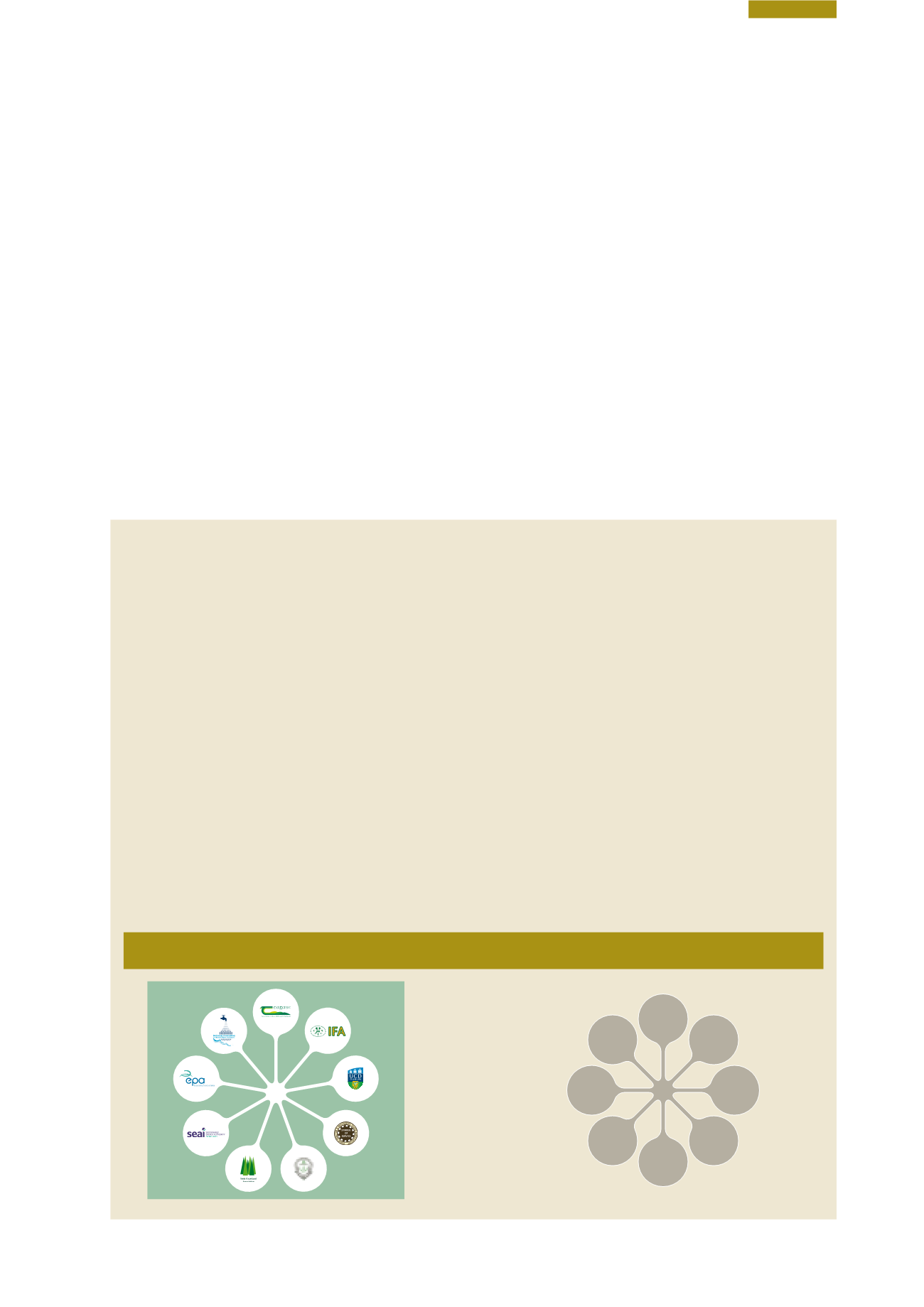

Smart Farming
www.smartfarming.ieReducing costs and protecting the environment
inside the farm gate through better resource
management.
Improving farm incomes and protecting the environment
are the drive behind the voluntary Smart Farming green
business programme. This initiative focuses on ways
to reduce costs inside the farm gate and protect the
environment through better resource management in
eight key areas: feed, grassland, water, inputs, time
management, soil fertility, machinery management and
energy use. The programme is led by the Irish Farmers
Association (IFA) in partnership with the EPA and brings
together the knowledge of Teagasc, the Fertilizer
Association of Ireland, the EPA, University College
Dublin and others. Smartfarming is communicating this
knowledge in a targeted way to improve farm incomes
whilst also protecting the environment (Figure 12.9).
These bodies collaborated to produce a Smart Farming
guide, which is a summary of top-tips to save money
and reduce waste while safeguarding the environment.
This guide is available through the farm directory
( www. ifarm.ieand
www.smartfarming.ie). During 2014, over
600 farmers across the country participated and saw
members of their discussion groups identify average cost
savings of €6,600 per farm.
The Carbon Navigator tool developed by Teagasc in
partnership with Bord Bia was piloted on a number
of farms in 2015. The tool is designed to assist
farmers in assessing their GHG status, with a focus
on mitigation actions that can be taken to achieve
improvements. It is being rolled out across participating
Smart Farming farms during 2016. Measures adopted
by participating farmers have resulted in less risk of
runoff to watercourses, extended grazing of grass,
better targeting of fertiliser application, reduced energy,
improved water efficiency and inputs use and reduced
GHG emissions and improved farm profitability.
199
Industrial Emission Licences for Pig and
Poultry Enterprises/Installations
Significant improvements in production efficiency in
the sector.
Substantial productivity improvements are being achieved in
the Irish pig sector, with Irish pig producers now producing
almost 1,500 kg of pig meat per sow compared with
1,221 kg in 1990 (DAFM, 2016a). Pig meat production
has increased by 76% between 1990 and 2015 against
the background of the falling size of the female breeding
herd. This reflects a significant improvement in production
efficiency in the sector. Moreover, the annual amount of
phosphorus excreted by pigs has been reduced from 26 kg
to 17 kg per sow and progeny over the last 25 years. This
has been achieved through better ration formulation and
the use of enzymes to improve digestibility of phosphorus.
It has reduced the land area required for the spreading of
pig manure. The land spreading of pig manure is regulated
under the Nitrates Regulations and Nitrates Action
Programme which permit manure applications above the
prescribed crop’s phosphorus requirements. This transitional
arrangement will cease in 2017, increasing the area of land
required to utilise pig manure and will create an additional
challenge for the sector.
By the end of June 2016, the EPA had issued licences
(Industrial Emission Licences) for 117 pig and 93 poultry
enterprises/installations with a further 7 pig and 15
poultry applications on hand. Applications are still being
received from farms that are and have been operating
above the licensing threshold without a licence. Continued
failure by these operators to become regularised places
them at increasing risk of enforcement actions and risks
reputational damage to Ireland’s food image.
Chapter 12: Environment and Agriculture
Figure 12.9
Stakeholders Involved In and the Items Dealt With in Smartfarming Programme (Source:
Smartfarming.ie)feed
grassland
time
management
soil
fertility
machinery
water
inputs&
waste
energy


















